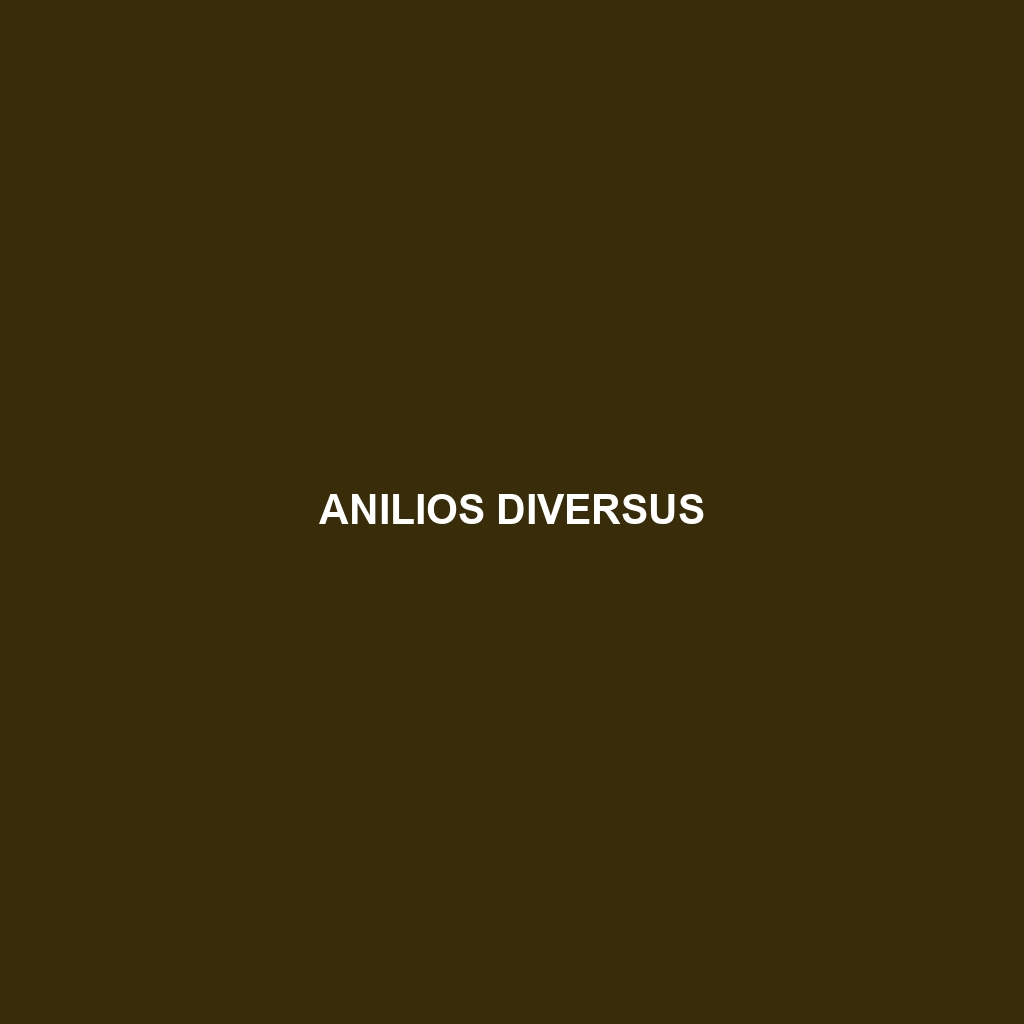
Tag: conservation status
-

Anilios guentheri
Discover the fascinating Anilios guentheri, or Guenther’s Blind Snake, a nocturnal species native to northeastern Australia, known for its glossy dark brown to black body and burrowing lifestyle. This unique snake primarily feeds on soft-bodied invertebrates and plays a crucial role in its ecosystem by regulating prey populations and contributing to soil health.
-

Anilios diversus
Discover the Anilios diversus, or diverse blind snake, a nocturnal fossorial species native to arid and semi-arid regions of Australia. With a smooth, cylindrical body growing up to 80 cm and an essential role in soil ecosystems, this snake primarily preys on small invertebrates and exhibits fascinating burrowing behaviors.
-

Anilios erycinus
Discover the Common Blind Snake (Anilios erycinus), a slender, fossorial species native to the tropical forests of northern Australia. Thriving in moist environments, this carnivorous snake plays a crucial role in regulating insect populations, contributing to ecological balance and biodiversity.
-

Anilios batillus
This non-venomous snake, known as Anilios batillus or “Blind Snake,” thrives in the forests of southeastern Queensland and northeastern New South Wales, featuring a cylindrical body with dark brown to reddish-brown coloration and a diet primarily consisting of earthworms and slugs. An adept burrower, it plays a crucial role in soil health and ecosystem balance…
-

Anguis veronensis
Discover the Italian slow worm, Anguis veronensis, a legless lizard known for its smooth, shiny scales and secretive nature, found in southern Europe’s grasslands and woodlands. This species thrives on a diet of small invertebrates and plays a vital role in maintaining ecosystem balance.
-

Anilios affinis
Discover the Anilios affinis, or common blind snake, a fossorial species native to Australia’s moist habitats, featuring a distinctive elongated body and a diet primarily consisting of small invertebrates. This non-venomous snake plays a crucial role in its ecosystem by helping to regulate invertebrate populations while providing a food source for larger predators.
-

Anilios aspina
Discover the Anilios aspina, a non-venomous snake native to the tropical rainforests of northern Australia, characterized by its elongated body reaching up to 1 meter and a diet of small invertebrates. This nocturnal, fossorial species thrives in moist environments, playing a vital role in its ecosystem by regulating invertebrate populations.
-

Anguis colchica
Short Description: The European Glass Lizard (Anguis colchica) is a legless lizard native to Eastern Europe, reaching up to 90 cm in length. With a smooth, shiny body and a diet primarily consisting of small invertebrates, this elusive species plays a vital role in its ecosystem while facing conservation challenges.
Search
Popular Posts
-
Gerrhopilus oligolepis
Discover the Gerrhopilus oligolepis, a nocturnal insectivore native to tropical and subtropical regions, known for its slender body, distinctive dorsal spots, and remarkable camouflage. This species plays a crucial role in its ecosystem by regulating insect populations and serves as an important food source for larger predators.
-
Gerrhopilus mirus
Gerrhopilus mirus, or the remarkable snake, is a small, nocturnal insectivore primarily found in the tropical rainforests of Southeast Asia. With its distinctive brown and yellow coloration, this adaptable species plays a crucial role in controlling insect populations and maintains a vital ecological balance within its habitat.
-
Gerrhopilus mcdowelli
Common Name Gerrhopilus mcdowelli Scientific Name Gerrhopilus mcdowelli Habitat Gerrhopilus mcdowelli is primarily found in the lush, humid environments of tropical rainforests, particularly within the regions of Southeast Asia. These serpentine creatures thrive in dense foliage near streams and rivers, enjoying moist conditions that support their biological needs. Their habitat preference also extends to nearby…
Categories
Archives
Tags
animal adaptations (790) animal behavior (4790) animal reproduction (803) behavior (919) biodiversity (7114) conservation (1670) conservation efforts (1535) conservation status (4944) diet (2099) echolocation (822) ecological balance (1622) ecological role (1495) ecology (791) ecosystem (1468) ecosystem role (2695) ecosystem roles (695) endangered species (2423) environmental conservation (716) habitat (3249) habitat conservation (957) Habitat Destruction (1079) habitat loss (3048) insectivorous reptiles (740) IUCN Red List (1521) lizard reproduction (696) nocturnal animals (2708) nocturnal behavior (2315) nocturnal reptiles (681) physical characteristics (1998) reproduction (2858) reptile conservation (1001) rodent (677) rodent species (1325) seed dispersal (2078) Seed Disperser (962) small mammals (1164) snake diet (723) snake reproduction (773) South America (791) species description (714) tropical forests (938) Vulnerable Species (4534) wildlife (2507) wildlife conservation (4699) wildlife protection (881)




